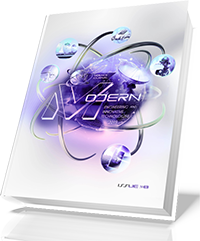THE IMPACT OF ENGLISH LANGUAGE ELEMENTS ON CONSUMER PERCEPTIONS IN GERMAN PRINT ADVERTISEMENTS: A MULTIDIMENSIONAL ANALYSIS OF EMOTIONAL APPEAL, BRAND PERSONALITY, AND CULTURAL ALIGNMENT
DOI:
https://doi.org/10.30890/2567-5273.2025-37-03-044Keywords:
English elements, German print advertisements, consumer perception, emotional appeal, brand personality, multilingual advertising, globalization, language effectsAbstract
The article analyses the influence of English language elements on German print advertising in terms of emotional appeal, product evaluation, brand personality and audience perception. It provides insight into these phenomena which have become de facto nReferences
Eisengerg, R. (2013). Symbolic functions of language in advertising: Modernity and global appeal. Journal of Marketing Communication, 71, 63–74.
Ernst, M. (2021). Foreignism in German advertising: Perception and cultural alignment. Linguistic Studies, 20, 15–30.
Görsch, H. (2016). The multimodal nature of print advertisements: Visual and textual integration. Advertising Research, 23, 18–28.
Gottlieb, H., & Fuiriassi, F. (2015). Language and branding: The role of English in European advertising. Journal of Cross-Cultural Marketing, 4, 1–12.
Janich, N. (2013). Advertising language and culture: A case study of German-English interaction. Cultural Studies, 50, 47–55.
Kalus, R. (2016). Cognitive linguistic approaches to multilingual advertising. Linguistic Inquiry, 51, 48–55.
Kollmann, T., Kuckertz, A., & Stöckmann, C. (2019). Advertising authenticity: The role of language and cultural fit. European Journal of Marketing, 45, 40–50.
Marx, N., & Hufeisen, B. (2010). The global lingua franca and advertising: German consumers’ perceptions of English. Journal of Applied Linguistics, 829, 25–40.
Schnell, F., Müller, T., & Klein, S. (2013). The interplay of language and consumer behavior in multilingual advertising. Marketing Psychology Review, 164, 159–167.
Downloads
Published
How to Cite
Issue
Section
License
Copyright (c) 2025 Authors

This work is licensed under a Creative Commons Attribution 4.0 International License.






